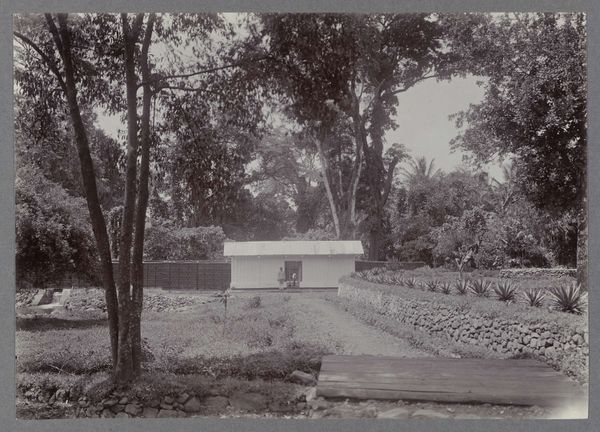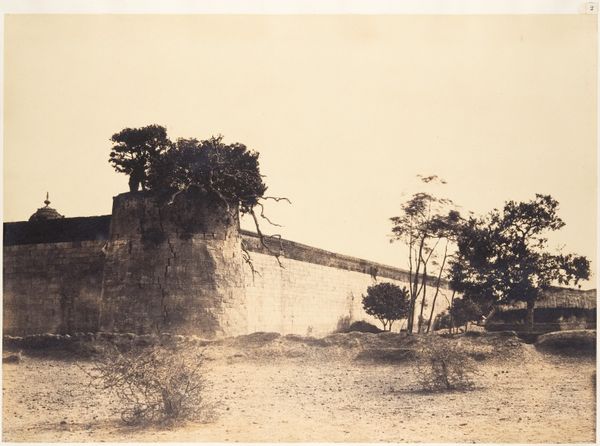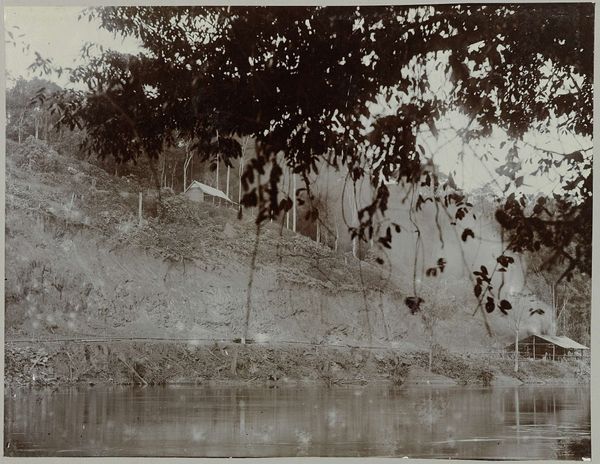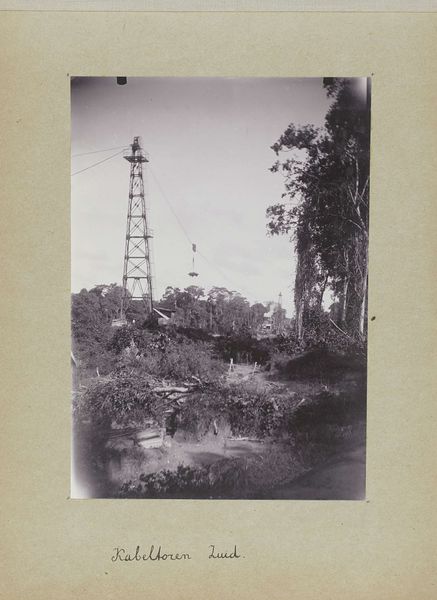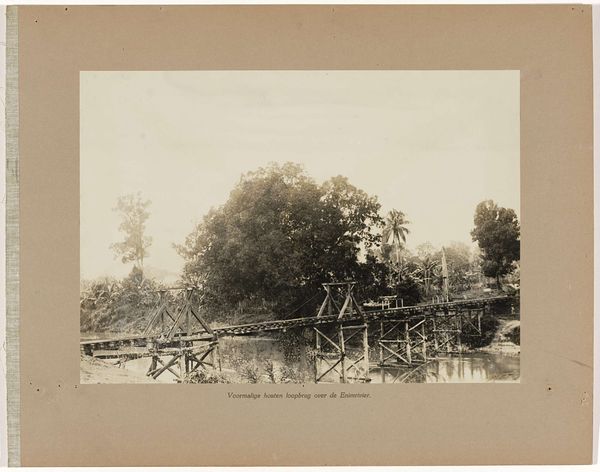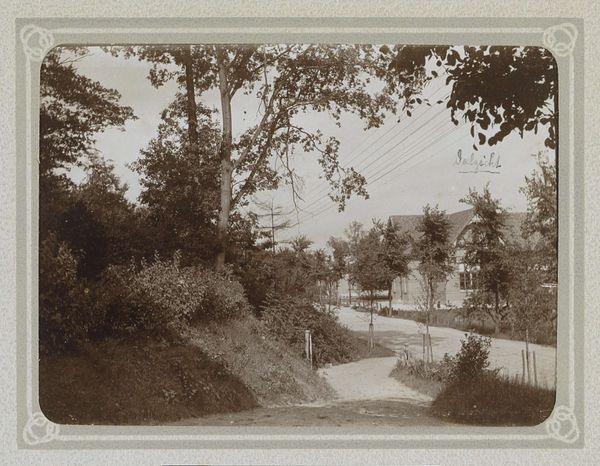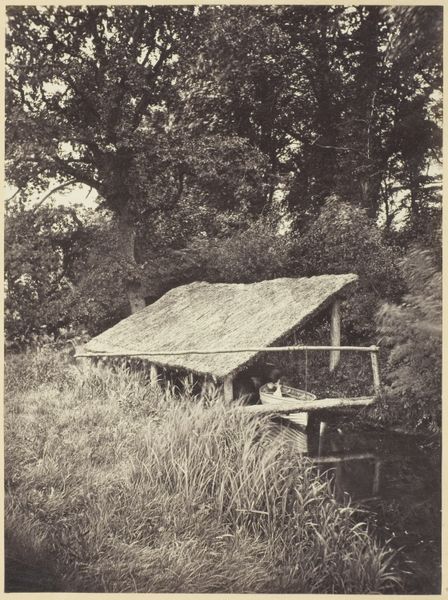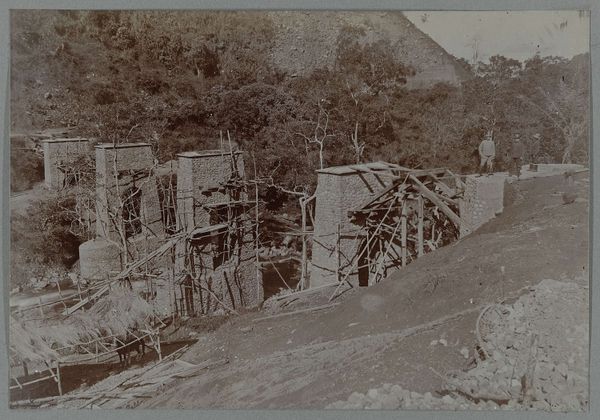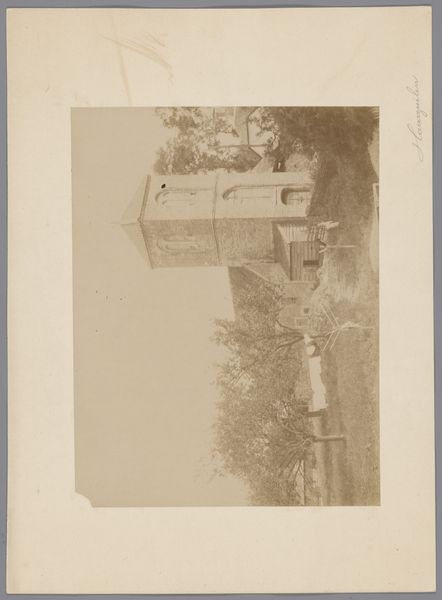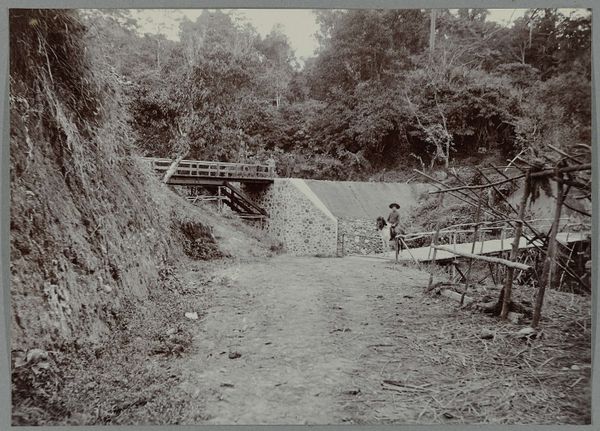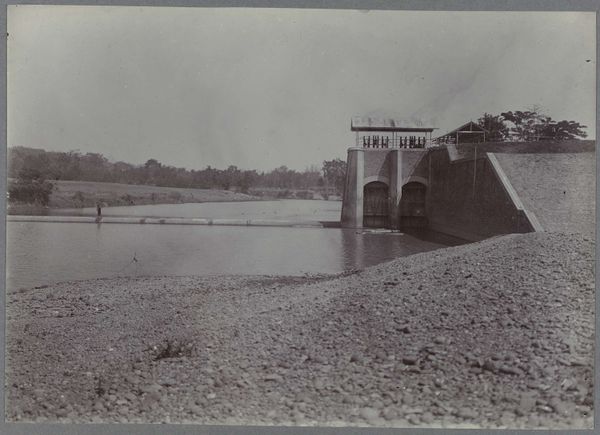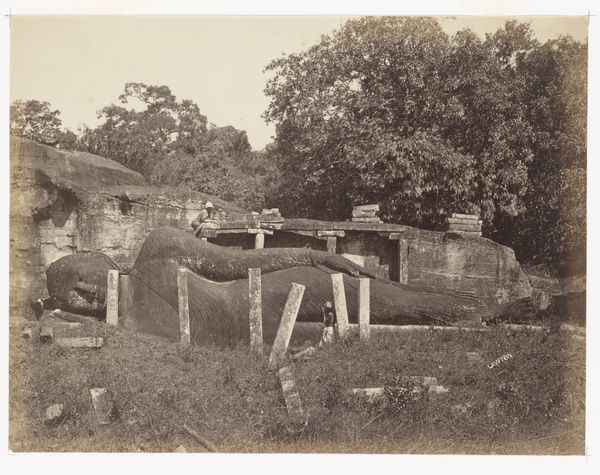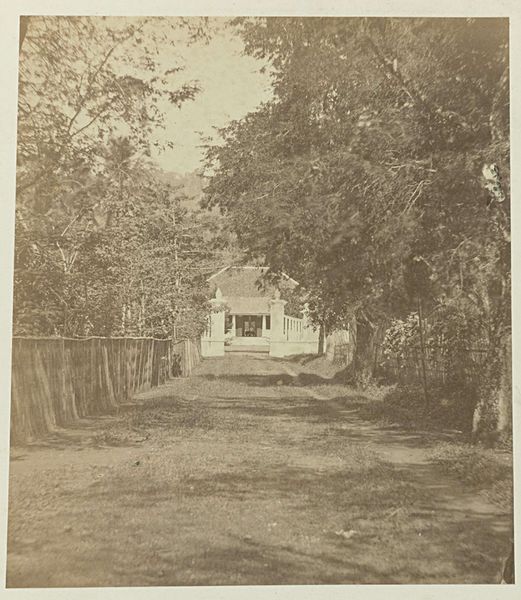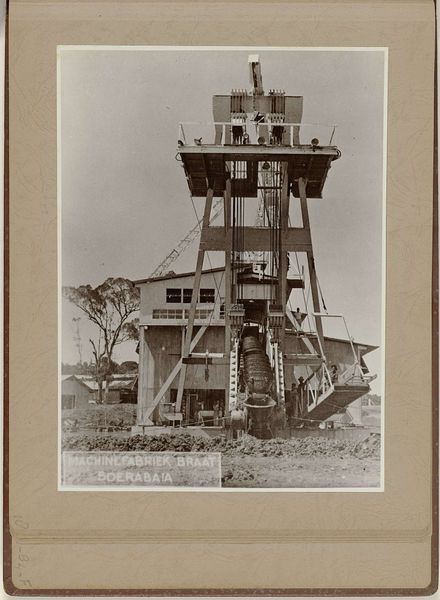
mixed-media, print, photography, site-specific
#
mixed-media
# print
#
landscape
#
photography
#
site-specific
Dimensions: height 129 mm, width 100 mm
Copyright: Rijks Museum: Open Domain
Curator: This photograph, entitled "Uitkijktoren aan de waterkant," which roughly translates to "Watchtower on the Waterfront," was created sometime between 1903 and 1913. It's a mixed-media piece that blends photography and printing techniques. What strikes you immediately about it? Editor: The contrast, certainly. That imposing, almost brutalist concrete tower abruptly rising out of the overgrown grass feels…stark. It makes you want to run your hand across the rough surfaces, imagine the dampness and the decay setting in. Curator: I agree, there is something visually unsettling about the utilitarian structure being almost consumed by the lush landscape. The watchtower’s purpose, one assumes, was about observation, perhaps control, embedded within the exotic and what would likely be seen as untamed environment by colonial powers. Editor: Exactly, look closer, and you see the signage. “Zwemrichting, Kroengplant-Aden, Neemt een Bad,” I suspect that advertises an old swimming spot to those plantation workers. Were the resources accessible equally though? The tower overlooks more than water, I’d imagine; power and labor also are deeply intertwined. Curator: Undoubtedly. Photography like this served various colonial purposes – documentation, promotion, even asserting a claim over the territory and projecting the image of civilization being brought to nature. The use of mixed media techniques adds another layer, moving the photograph away from simply documenting what’s in front of the camera and into the territory of creating a narrative. Editor: Think about who was involved, and at which points. Someone had to climb up with that wood and hammer those supports up at the top, then others, probably more educated and well-off ones would survey from the summit? You can even see the frame around the view! How literally are we supposed to be "framing" and, therefore, appropriating an image of a distant land, or another way of life? Curator: Precisely! A visual manifestation of power structures. The framing, the point of view—all contribute to understanding not just what's depicted but also why and for whom. Editor: So, an image intended for observation ends up revealing so much more about the system doing the observing. Makes you want to dismantle the whole apparatus, brick by brick. Curator: Indeed. It reminds us that every image, every artifact, carries the imprint of its creation and the social forces that shaped it. Editor: And of its consumers as well—each touch changes it just enough, over time. That makes this feel all too appropriate, and of its time.
Comments
No comments
Be the first to comment and join the conversation on the ultimate creative platform.
